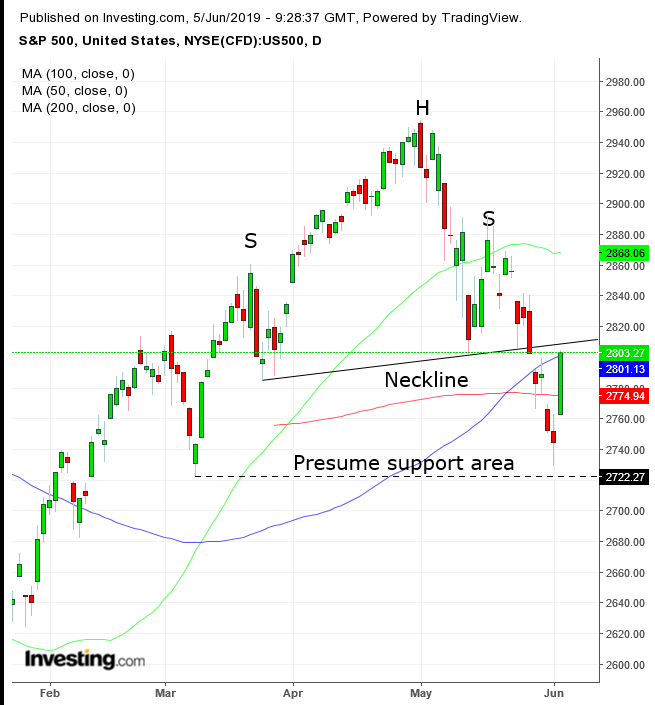The S&P 500 Index soared 2.14% yesterday, after a dovish Fed hinted at a possible rate cut and a hopeful Mexico suggested it can avoid tariffs. However, in a tweet, President Donald Trump already sucked out the headwind of Mexico tariff relief by clarifying he means business. Speculation of an upcoming rate cut remains.
It’s funny how short investors’ memories are. Just this past Friday the outlook for falling rates projected a slowing economy, causing the worst month of the year for equities and the biggest weekly drop for Treasury yields since 2014.
The same outlook that caused the doubling of last week’s losses on Friday is suddenly the very same reason that yesterday propelled the second biggest comeback of the year since Jan. 4.

From a technical perspective, the SPX’s jump is considered a correction within a downtrend, after the benchmark completed a H&S top. While the index did, in fact, scale back above the 200 DMA, it closed below the H&S neckline. The S&P would have to close well above the neckline, preferably above its right shoulder, to blow it out.
While the market is entitled to change its mind—even in the medium-term, as this pattern implies—the odds are the current surge is short-term noise rather than a structural shift. The 2% neckline penetration as of Monday satisfied a moderate 2% price-filter to avoid a bear trap, but not the minimum 3% filter for conservative traders.
The price has so far remained below the neckline for five sessions, including over a weekend, satisfying even a conservative time-filter.
From a risk-reward ratio perspective the current price is an ideal shorting opportunity.
Trading Strategies
Conservative traders would wait for the minimum 3% downside breakout from the neckline to 2,700, followed by a return move to verify traders have gone over to the bears, when at least one long, red candle engulfs a green or small candle after reaching the neckline.
Moderate traders may be more comfortable shorting with a close below the 200 DMA.
Aggressive traders may short at will, after aggressive filters have been well established.
Trade Sample
- Entry: 2,800
- Stop-Loss: 2,810
- Risk: 10 points
- Target: 2,730 – above Monday’s lows
- Reward: 70 points
- Risk-Reward Ratio: 1:7
